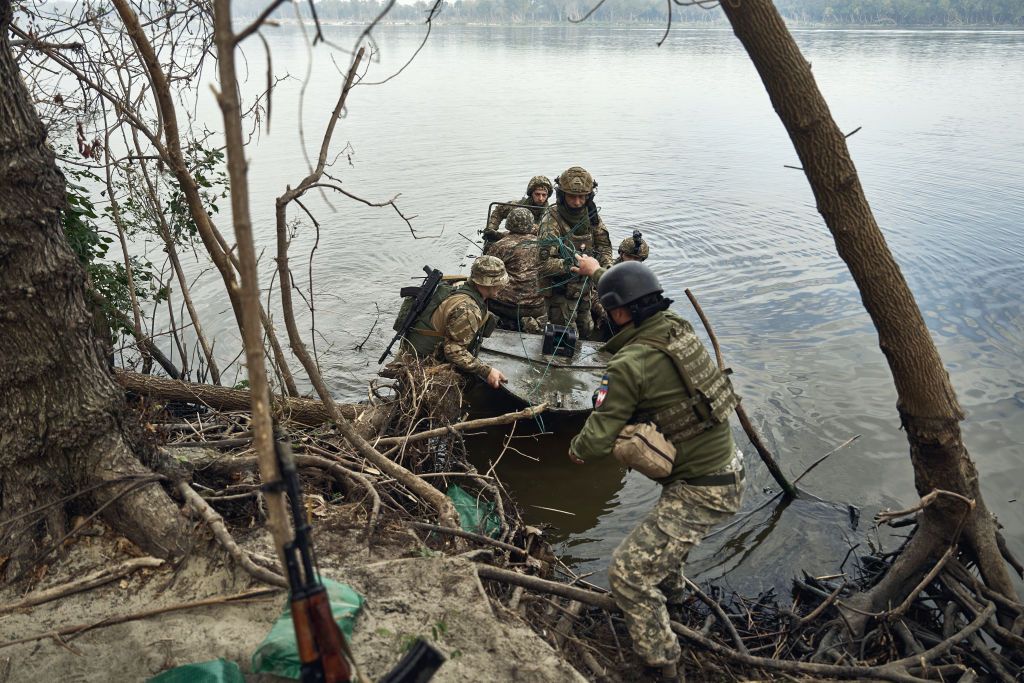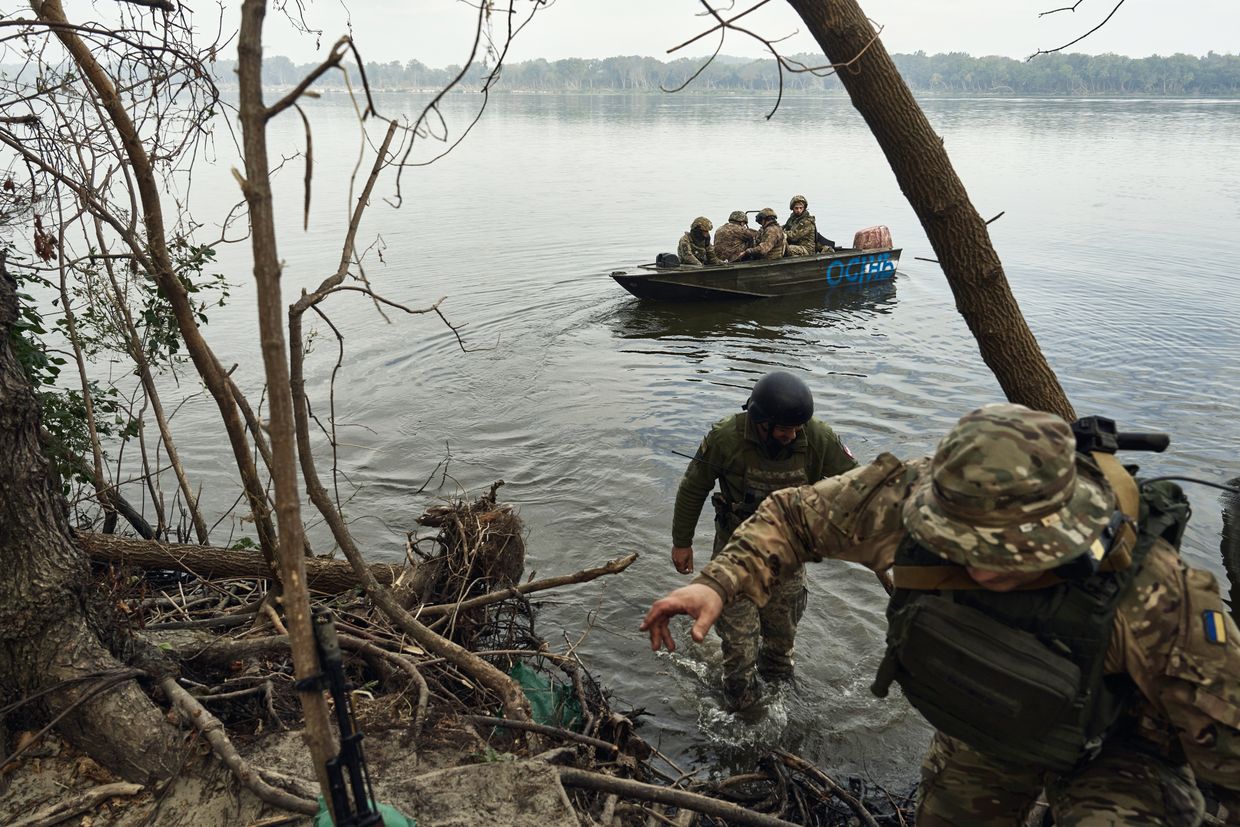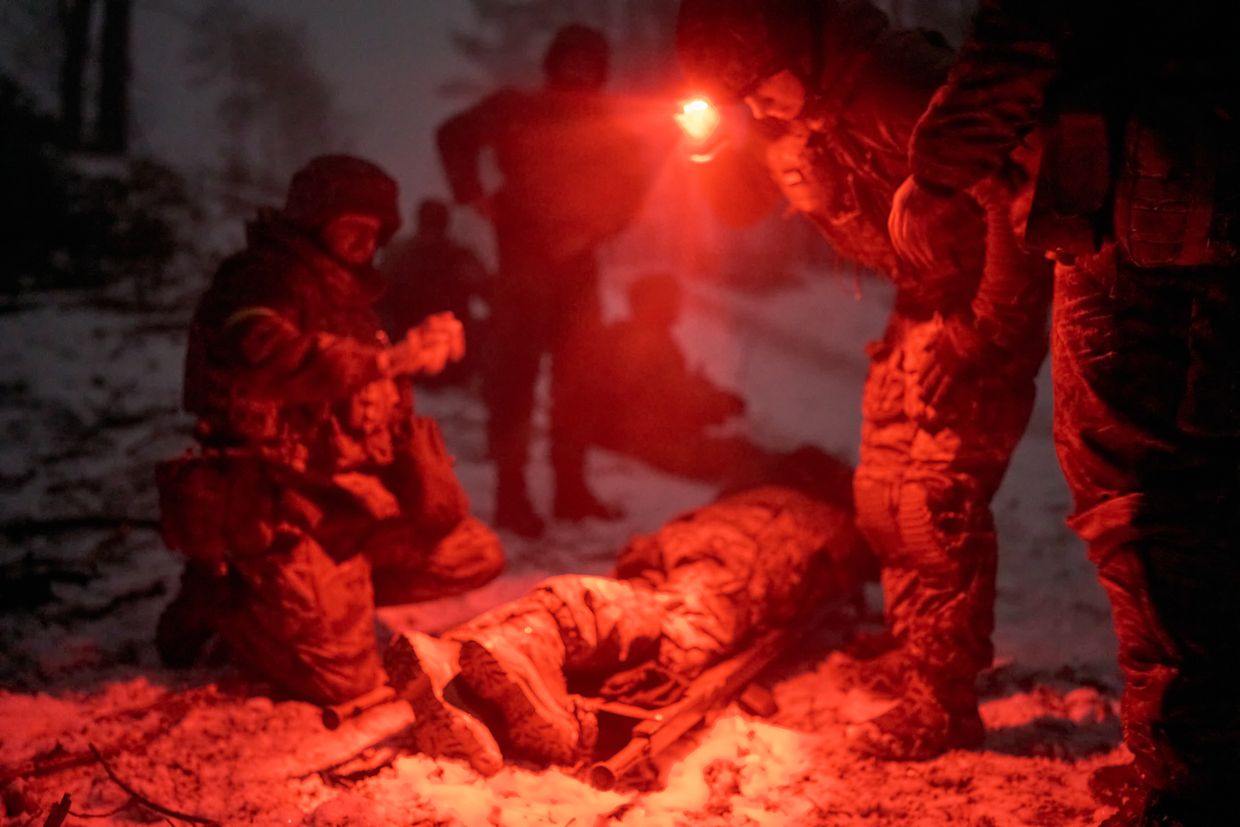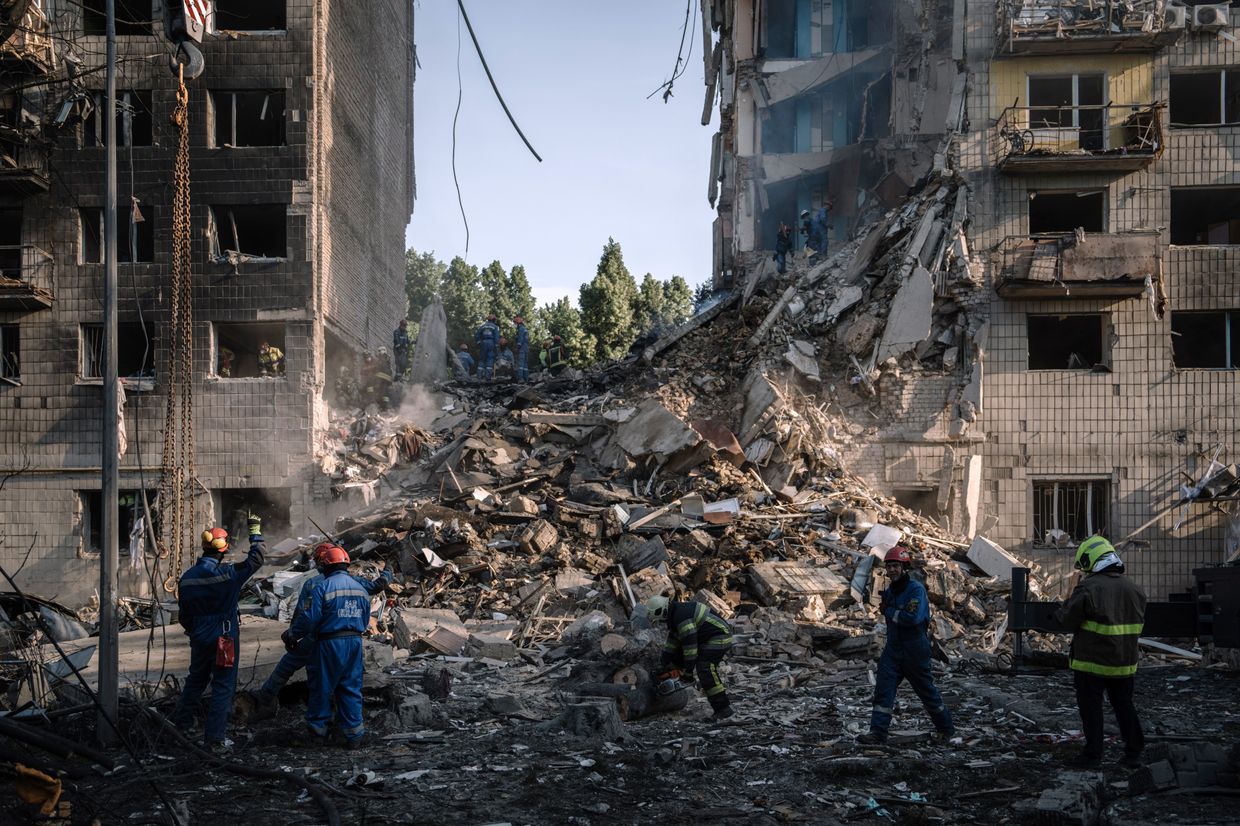The Ukrainian operation near Krynky in Kherson Oblast appears to be over, as the military said on July 17 that the positions in the village were "completely destroyed."
It follows reports that Ukraine had withdrawn from the village on the Dnipro River's east bank several weeks earlier.
"The Defense Forces of Ukraine continue to carry out combat missions on the left bank of the Dnipro, in particular in the area of the settlement of Krynky," Dmytro Lykhovii, the spokesperson of the Tavria group of forces, told the Kyiv Independent.
"However, it is true that most of the main positions of the Ukrainian troops in the village of Krynky, as a result of intense, combined, and prolonged enemy fire, were completely destroyed."
As the fighting in the area draws to conclusion, some questions remain. What was the point of the operation, what did it gain, and was it worth it?
In December, the Kyiv Independent reported from Dnipro River's west bank, speaking to soldiers taking part in the cross-river raids. Many service members said the fighting felt "hopeless." Others felt that it was a form of political theater to distract Western allies from the largely failed counteroffensive.
Ukraine did not reveal the losses its forces suffered over the past nine months in and around the bridgehead on Dnipro's east bank. Soldiers told the Kyiv Independent back in December that "bodies lost to the river are nearly impossible to retrieve."
The Ukrainian investigative media outlet Slidstvo.info reported on July 17 that 262 soldiers were safely identified as killed in Krynky and brought back for burial between October and June, while the fate of a much greater number remains unknown. As of today, 788 soldiers are considered officially missing in the village.
The full losses, also including casualties taken during the dangerous river crossings and fighting in other areas, are difficult to establish with certainty.

Bloody battles in swampy ground
In the fall of 2022, a Ukrainian counteroffensive succeeded in pushing Russia out of Kherson and other regional settlements on the west bank of the Dnipro River. The several-kilometer-wide swampy river divided the Russian and Ukrainian positions in the area.
As early as February 2023, Ukrainian troops began conducting risky raids across the river, probing Russian defenses on the occupied east bank.
The first reports emerged over the summer of 2023 of Ukraine holding a bridgehead on the other side of the Dnipro River near the destroyed Antonivsky Bridge.
The operation kicked into a higher gear in October when – according to footage geolocated by the Institute for the Study of War (ISW) – Kyiv entered Krynky, a small costal village on the east bank.
The settlement turned into the key bridgehead for Ukrainian troops operating across the Dnipro River and the focal point of brutal fighting in Kherson Oblast.
Russia threw huge numbers at Krynky, but the "front line" remained largely static for months despite losses on both sides. Russian casualties reportedly included a large number of elite units like airborne troops or marines.
The manpower Russia deployed in the area has continued to swell, however. The ranks of the Russian group of forces in the area grew from some 64,000 last fall to up to 120,000 by July 2024, experts estimate.

Then Russian Defense Minister Sergei Shoigu claimed that his troops captured Krynky already in February, but Kyiv and geolocated footage contradicted this statement. Analysis explained Shoigu’s claim as an attempt to score political points ahead of the presidential election.
Nevertheless, the bridgehead continued to face waves of Russian attacks while Ukrainian forces dealt with the lack of necessary equipment to fight them off successfully.
Crossing the river to deliver supplies and reinforcements was always perilous due to Russian drones and mortars, and the delays in U.S. assistance in early 2024 likely only aggravated the problem.
Soldiers complained to the Kyiv Independent that digging in was almost impossible in the swampy terrain, and with Krynky turned to – in the words of Lykhovii – "a pile of rubble," there seems to be little left to hold on to.
While the military assures that fighting on the east bank is ongoing, the loss of Krynky may become the death knell of this operation.
Gains and costs
Ukraine’s capture of Krynky came just as it was becoming apparent that the long-expected counteroffensive in the south and east would fail to achieve any major goals.
Many analysts and soldiers approached by the Kyiv Independent last year suggested that a key goal was to demonstrate at least some success to the public and reassure Western partners.
"Although one can identify military goals, the operation also appears to have political objectives, giving the sense that Ukrainian forces are still on the offensive," Michael Kofman, defense analyst and senior fellow at Carnegie Endowment, told the Kyiv Independent in late 2023.
Ukraine wanted to push eastward from the river to create a buffer zone between Russian troops on the east bank and the Ukrainian-controlled west bank, making it harder for the Russian troops to attack Kherson and the surrounding villages.

The operation had some success by establishing a presence on the east bank, but the soldiers who spoke to the Kyiv Independent said the cost outweighed the tactical operational benefit.
Kofman suggested that the operation could have brought fruit if combined with a push in Zaporizhzhia Oblast, but that has not come to pass.
In the end, Ukraine did not achieve territorial advances while putting great strain on its soldiers deployed there.
Russian forces used a variety of tactics in their offensive operations against Ukrainian positions, including human waves and the use of prohibited chemical weapons.
Soldiers told Slidstvo.info and the Kyiv Independent that the nature of the fighting in Krynky made it difficult to treat injured soldiers and challenging to retrieve the bodies of those killed, likely accounting for the high ratio between those killed and missing in action.
Slidtsvo.info also claimed, citing unconfirmed OSINT reporting, that Ukraine had lost 58 pieces of military equipment between October and June, compared to 271 equipment losses from the Russian side.
Lykhovii refused to comment on what Ukrainian losses were throughout the operation but claimed that Russia's casualties were four to five times higher.

The Ukrainian Marine Corps said in November that Russian forces operating in the Krynky area had suffered 1,216 fatalities and 2,217 wounded and lost 24 tanks, 48 armored vehicles, 89 artillery systems and mortars, 135 other vehicles, nine multiple launch rocket systems, and 14 boats.
Military expert Oleksandr Kovalenko acknowledged in an op-ed in NV that Ukrainian forces had withdrawn from their positions and that the months-long operation had not resulted in the recapturing of any occupied territory.
But Kovalenko argued that the Krynky operation had an "impact on the entire war zone, and every life lost there saved a dozen lives in other areas," as it tied up a significant amount of Russian forces that may have been directed elsewhere.

Kovalenko concluded that Ukrainian troops left the area when it no longer made any sense to stay—a similar argument that was made to explain the long, bloody battles in Avdiivka and Bakhmut.
Retired military officer and defense expert Viktor Kevliuk also agreed that the mission helped to tie down Russian forces that could have been deployed elsewhere otherwise.
"In November 2023, the number of the (Russian) Dnieper group was 64,000. Today, it is about 100,000, with some estimates of even 120,000," Kevliuk told the Kyiv Independent.
"Would the deployment of an additional 40,000-60,000 soldiers affect any other direction?" he asked rhetorically.
While the basic premise of such operations—to inflict casualties on Russian troops, to create a diversion, and to prevent Russian forces from being redirected elsewhere—was acknowledged, Ukrainian military leadership drew criticism for making its forces fight those battles past their point of usefulness.
Ukrainian forces also suffered significant losses in these battles, with over 1,000 Ukrainian soldiers likely killed in action in or around Krynky.
It is unclear what the practical impact of the loss of Krynky will have on the battlefield. Ukraine has lost its key beachhead on the occupied side of the Dnipro River, but Ukrainian forces have had little success advancing from the area over the past nine months of fighting.
At the same time, Russia's battlefield position in the area will also not change dramatically, as it, too, must contend with the complications associated with crossing the river.













